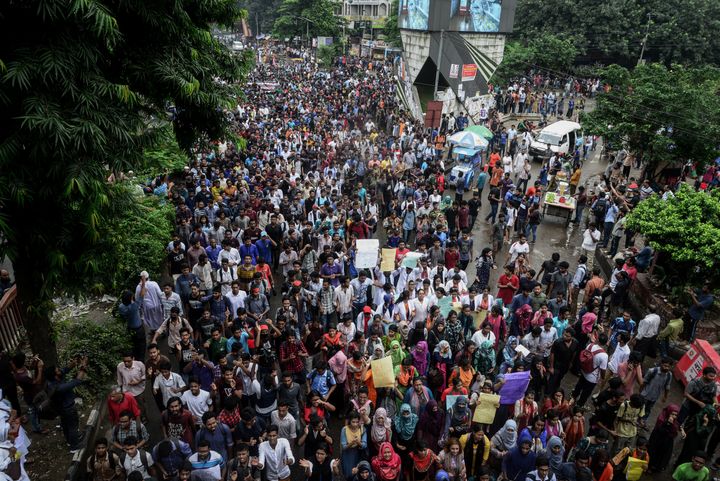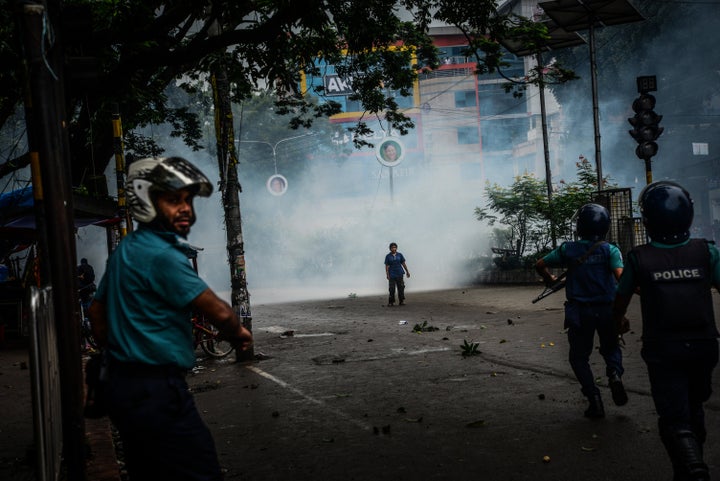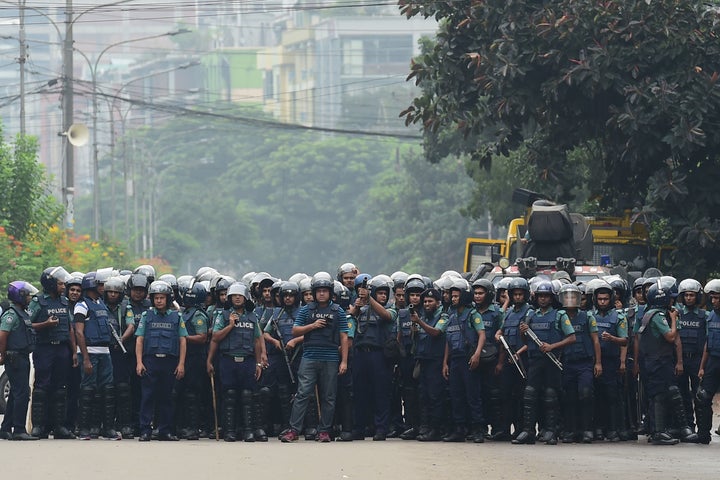
DHAKA, Bangladesh (AP) — Thousands of angry young people took to the streets of Bangladesh’s capital again Sunday to demand safer streets, facing police firing tear gas and pro-government activists who attacked them with clubs.
Protests have flared repeatedly in Dhaka since two students were killed last week by speeding buses.
The pro-government activists, members of a political youth league, also attacked at least five journalists, including an Associated Press photographer who was briefly hospitalized with a head injury. Footage of the attack on social media showed him surrounded and beaten by nearly a dozen men in the city’s Dhanmondi neighborhood.

The protests have become a serious embarrassment to the government of Prime Minister Sheikh Hasina ahead of a general election due in December. Her party is blaming the main opposition, led by Prime Minister Khaleda Zia, for using the student anger to create chaos for political gains. Political feuding between the two political leaders has dominated Bangladesh’s politics for more than a decade.
Zia’s party has formally extended its support to the protesters, but Hasina has also reached out to the demonstrators by pledging to improve road safety.

Meanwhile, on Saturday, an official car carrying the U.S. ambassador to Bangladesh, Marcia Bernicat, was attacked by a group of armed men, some riding motorcycles, as it drove through Dhaka, according to a Sunday statement from the embassy. No one was injured.
Badiul Alam Majumdar, a prominent local activist and government critic, said the attack happened as the ambassador left a dinner party at his home.
On Sunday, the U.S. Embassy said in a statement on its Facebook page that the protesters “have united and captured the imagination of the whole country,” noting that “nothing can justify the brutal attacks and violence over the weekend against the thousands of young people who have been peacefully exercising their democratic rights in supporting a safer Bangladesh.“

The roads of Dhaka are a web of gridlock and chaos. Unlicensed drivers, unregistered vehicles and speeding buses are commonplace, police corruption is rife and traffic enforcement often nonexistent. At least 12,000 people die each year in road accidents in Bangladesh.
The demonstrating students have stopped thousands of vehicles during the protests, including those of top officials, checking if the cars were registered and the drivers licensed.

